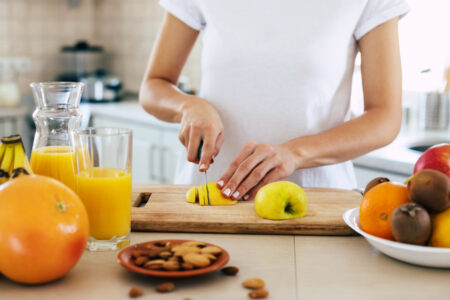A new reality

The last week has seen two sets of data around consumer spending patterns in the UK. The first from ONS finds almost half of people have cut back on food purchases, while others are having to spend more on their shopping as the cost of living surges. ONS figures also show that 49% of Britons said they bought less food than normal between 22 June and 3 July, up from just 8% when the survey began in September 2021.
In the second lot of data, from Barclaycard, consumer card spending grew 6.2 per cent in June compared to the same period in 2021, with the entertainment, hospitality and international travel sectors all month-on-month beneficiaries.
Brits, it appears, want to enjoy the early summer weather.
Barclaycard echoed the ONS with concern around rising living costs, though, with consumers becoming more selective about their spending and feeling less able to live within their means each month.
The data from Barclaycard shows shopping at supermarkets and specialist food and drink stores saw year-on-year decreases of -0.8 per cent and -1.1 per cent respectively, with almost half of consumers (49 per cent) seeking more value from their weekly shop – an eight point rise on last month (41 per cent).
What stands out is Brits remaining keen on the hospitality sector and wanting to eat and drink out of home with friends and family. Although spending at restaurants was down -3.3 per cent compared to June 2021, the category saw a small month-on-month uplift (0.8 per cent), as did bars, pubs and clubs (up 0.1 per cent). Takeaways & fast food remain popular too, recording growth of 2.3 per cent month-on-month and 9.4 per cent year-on-year respectively.
It’s clear that as the cost of living crisis continues to deepen, and now, as we wait for a new PM to set a different tone (possibly), food and drink retailers will undoubtedly negotiate with suppliers to share cost increases.
New PM or not, tough decisions are on the way from all sides. Continuing pressures will see retailers looking at which products remain on the shelves as consumers rein in spending.
Nonetheless, if the hot weather continues as predicted, and many consumers choose to stay in the UK, we could see key categories emerge stronger. Consumers may seek out increased promotions as food retailers work to maintain market share at this time. Also, the hot weather cheers on the Brits. As consumers see grocery bills increase faster than prices on restaurant menus, they may choose to dine out.
It’s all pointing to an interesting time (yet again) for food and drink. Food and beverage manufacturers are carrying increased raw materials and packaging costs currently. However, food processors are still having difficulty finding key ingredients. They have had to be, and will still be creative, with their products and work on their formulations to ensure there is no change to taste and quality.
The change in shopping preferences puts food and beverage businesses at great risk and brings up concerns. Who has the greater ability to diversify brands at varying price points? Where should businesses put their focus as preferences change?
The businesses that can successfully deliver and market products will be well positioned to capitalise on changing preferences. This is especially true for brands that offer affordable luxury or convenient substitutes. As ever, consumer data holds the key to maintain profitability as preferences change.
- Rodney Jack, editor, Food & Drink Technology.
Keep in touch via email: rodney@bellpublishing.com Twitter: @foodanddrinktec or LinkedIn: Food & Drink Technology magazine.



